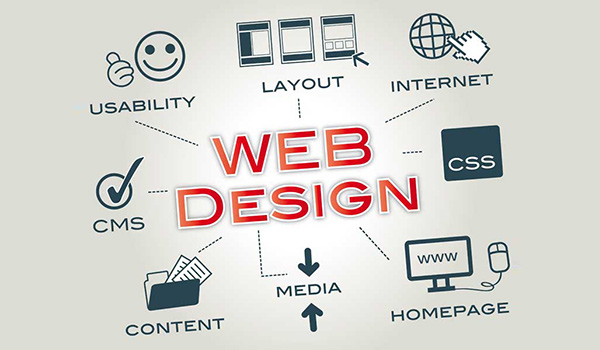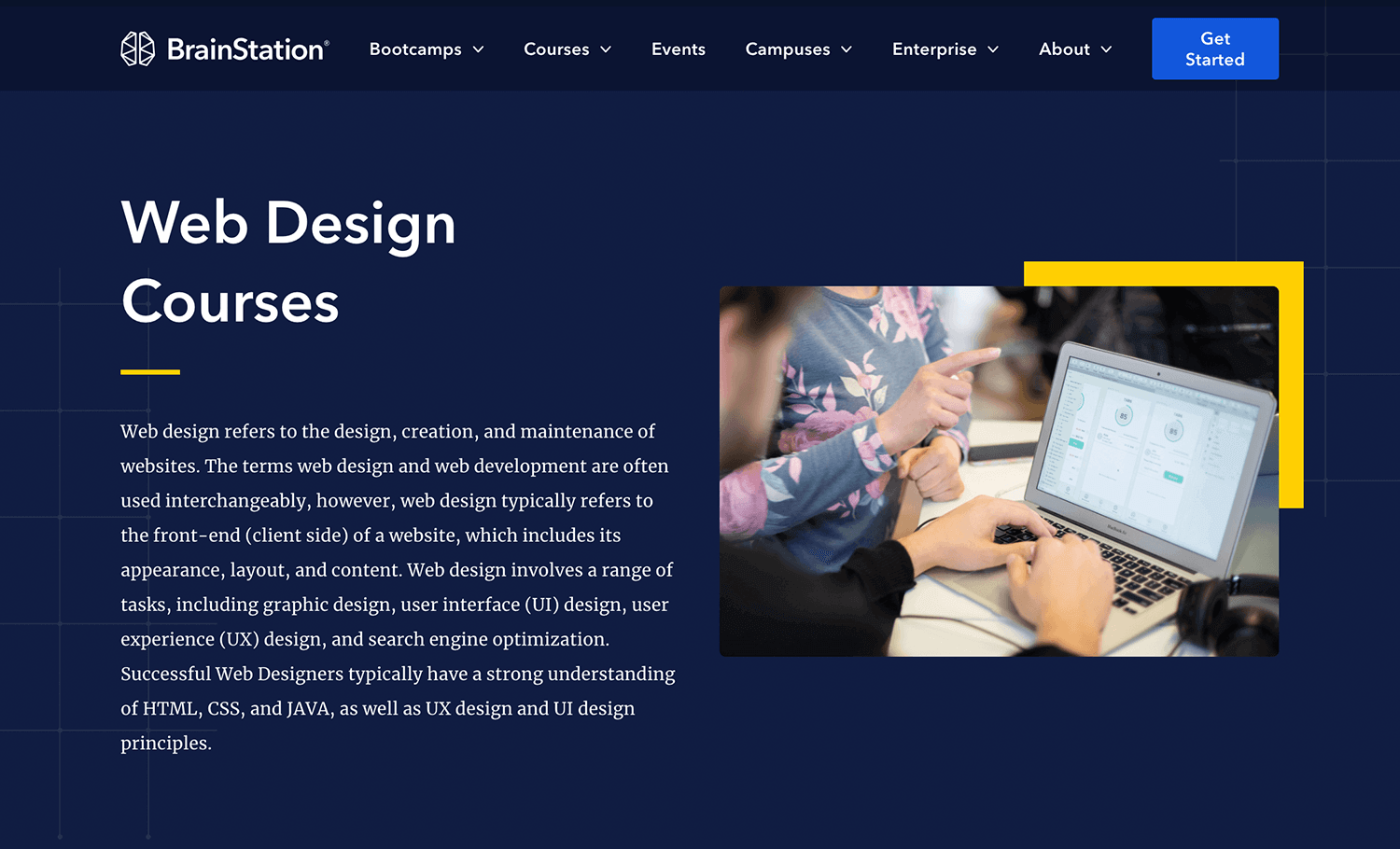Professional Aligned Position Web Design: Custom Websites Tailored to Your Business Needs
Wiki Article
The Most Effective Sorts Of Web Design to Enhance Individual Experience and Engagement
In the ever-evolving landscape of digital interaction, the efficiency of website design substantially affects customer experience and interaction. Various style methods, such as minimalist, responsive, and interactive layouts, each offer special advantages that can accommodate varied individual needs. Comprehending which types of website design best offer these purposes can be crucial for organizations aiming to enhance customer contentment and retention. The question stays: which style aspects truly resonate with users and foster meaningful engagement? The expedition of these principles exposes critical insights that might redefine your approach to Web style.Minimalist Website Design
As digital landscapes come to be significantly messy, minimal Web design has actually become a powerful strategy to enhancing customer experience. This layout ideology focuses on simpleness, concentrating on vital elements while eliminating unneeded disturbances. By making use of adequate white space, straightforward navigating, and a minimal color palette, minimal style promotes clarity and routes individual focus to key material.The core concept of minimalist Web style is to create a seamless interaction for customers. By minimizing cognitive lots, customers can quickly understand details without really feeling overwhelmed. This straight method not just enhances usability yet likewise encourages interaction, as visitors are more probable to explore a website that is visually attractive and easy to navigate.
In addition, minimalist style usually emphasizes typography and imagery, utilizing these elements tactically to communicate messages properly. In significance, minimalist Web layout is not simply a trend; it is a thoughtful approach that identifies the value of user-centered layout.
Responsive Website Design
In today's varied electronic setting, responsive Web layout has actually become necessary for developing a smooth customer experience throughout a wide variety of gadgets. As individuals accessibility internet sites on smart devices, desktops, laptop computers, and tablet computers, the capacity of a web site to adjust its design and material to different screen dimensions and resolutions is vital.Responsive Web layout utilizes adaptable grids, images, and CSS media queries to ensure that Web material exists optimally, no matter of the tool utilized. This method not only boosts the aesthetic charm of an internet site but also dramatically boosts functionality. Users are most likely to engage with a site that provides a consistent experience, as it removes the stress of needing to zoom in or scroll exceedingly.
Additionally, search engines, consisting of Google, focus on mobile-friendly websites in search rankings. By taking on responsive style, companies can boost their presence and get to a broader target market. This strategy likewise simplifies internet site maintenance, as a solitary version of the website can deal with all tools, decreasing the requirement for numerous versions. In recap, receptive website design is a basic method that boosts user experience, involvement, and overall complete satisfaction.
Interactive Web Design
Responsive Web layout prepares for improving customer experience, but interactive website design takes this an action better by involving users in a much more vibrant means - Aligned Position Web Design. By incorporating components such as animations, clickable prototypes, and real-time comments, interactive Web layout astounds users, drawing them into a richer browsing experienceThis approach not only promotes interaction however also motivates individuals to check out material actively instead of passively consuming it. Strategies such as gamification, where users earn rewards for completing tasks, can substantially boost the moment invested in a website and boost general contentment. Furthermore, interactive features can simplify complex details, making it extra absorbable and enjoyable.

Integrating interactive layout aspects can additionally lead to higher conversion prices, as customers are most likely to involve with a site that actively entails them. Aligned Position Web Design. Inevitably, interactive website design changes user experiences into remarkable trips, guaranteeing that visitors return time after time
Apartment Layout
Identified by its minimalistic approach, flat design highlights simplicity and performance, removing unneeded aspects and concentrating on necessary attributes. This layout philosophy prioritizes use, ensuring that users can browse interfaces effortlessly and effectiveness. By utilizing a clean aesthetic, level layout removes the mess frequently found in more ornate styles, thereby boosting user focus on web content and capability.The characteristic of level style lies in its usage of strong colors, simple typography, and geometric forms. These components contribute to a visually discover here enticing user interface that is both contemporary and approachable. Additionally, level layout promotes a sense of quality, permitting individuals to discern essential activities and info without distraction.
In addition, level style is particularly reliable in responsive website design, as its simplicity converts well across numerous gadgets and display sizes. The lack of complex textures and slopes minimizes filling times, which is vital for preserving customer engagement. As digital landscapes proceed to develop, level design continues to be an appropriate selection for creating user-friendly web sites that enhance general experience. By concentrating on vital attributes, flat layout not only satisfies customer needs however additionally motivates smooth interaction, making it an important part of effective Web layout strategies.
Adaptive Web Design
Adaptive Web style personalizes the customer experience by developing numerous fixed layouts tailored to different screen sizes and devices. Unlike responsive design, which fluidly changes a single design, flexible layout uses distinctive formats for specific breakpoints, guaranteeing optimal presentation on various platforms. This approach allows developers to concentrate on the one-of-a-kind characteristics of each tool, boosting use by supplying specifically what individuals need based on their context.One of the key benefits of flexible Web design is its capacity to maximize tons times and performance. By serving customized web content and pictures that fit the individual's device, websites can decrease information usage and improve loading rates. This is specifically helpful for individuals with slower connections or minimal information plans.

Furthermore, adaptive design assists in an extra controlled and constant branding experience. Because designers create several formats, they can ensure that the visual aspects align with the brand name's identification try this website across different platforms - Aligned Position Web Design. This leads to a natural user experience, improving involvement and advertising user retention
Final Thought
Minimalist style promotes clearness and focus, while responsive layout makes certain versatility across various devices, advertising access. Jointly, these design approaches add to the development of user-friendly environments that not just enhance complete satisfaction but additionally drive higher conversion rates, emphasizing their important value in contemporary Web design strategies.
Minimalist style promotes clearness and emphasis, while receptive style makes certain flexibility throughout numerous tools, advertising accessibility. Collectively, these design comes close to add to the production of straightforward settings that not just their website boost contentment yet additionally drive greater conversion prices, highlighting their important relevance in modern Web style techniques.
Report this wiki page